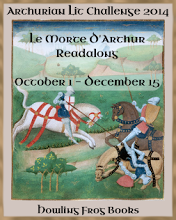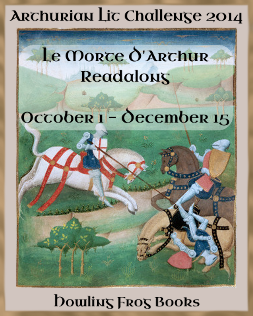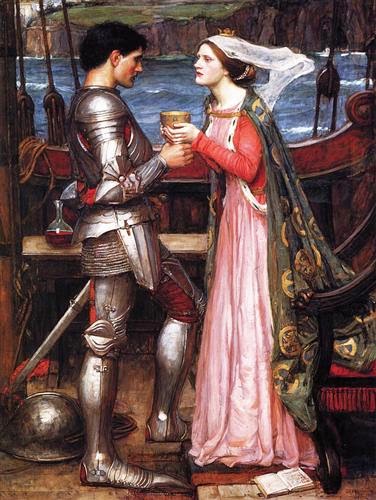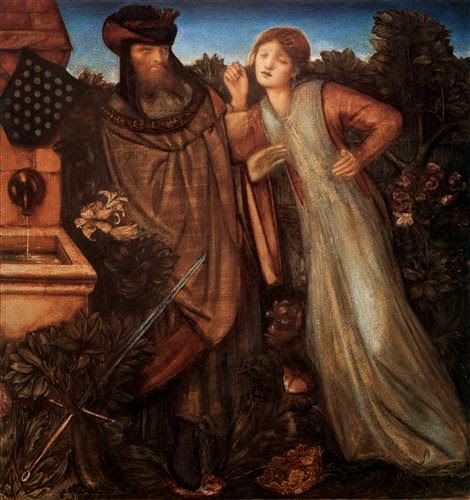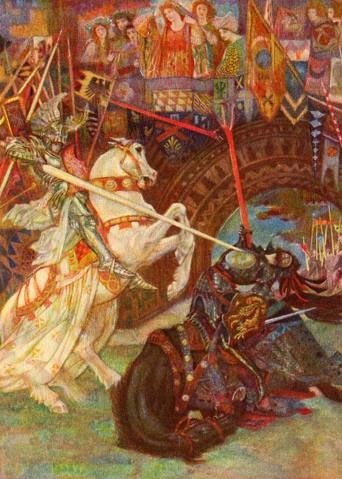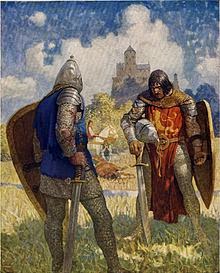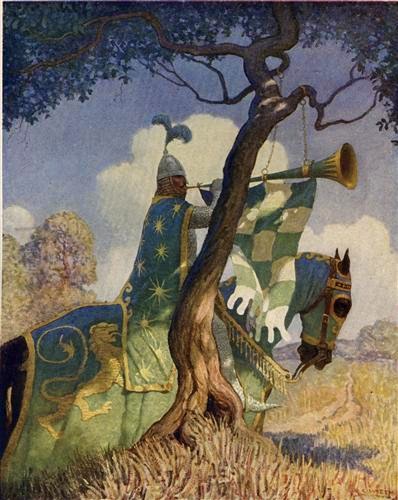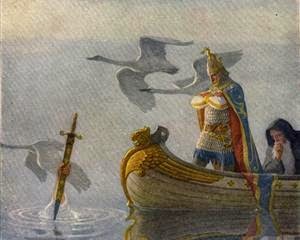Books XVI – XXI
This section was a lovely mystical part of the book, the first time where the prose means something more profound, something beyond ourselves.
In these sections the stories take a rather abrupt turn. Gawain decides to declare a search for the Holy Grail (Sangreal) at the drop of a hat, and while all the knights are rather enthused, Arthur is upset ……. somehow he knows that this will be the end of his Round Table as many knights go forth to die in the quest.
 |
| The Damsel of the Sanct Grael Dante Gabriel Rossetti source Wikiart |
There are a number of interesting adventures, but these battles and odd happenings are no longer light-hearted and gay, but instead are coloured with a kind of melancholy air. Visions permeate everyone’s thoughts, everyone’s sleep, and hermits abound with dire warnings, wise advice, or noble sayings. Lancelot learns that all his endeavours and all his fame has been won for Queen Guinever instead of for God, and our worthy knight is sorrowful, realizing the littleness of his human achievements without a greater vision.
We get stories about Sir Percival, Sir Gawain, Sir Bors, and, of course, Sir Lancelot. Poor Gawain. His sense of honour had never been strong, and least of all his perseverance. He soon becomes fatigued with searching for the Sangreal —- even though it was his idea in the first place —– and is somewhat petulant because he’s met with hardly any adventures. When he meets an old hermit and inquires as to the cause of his bad luck, the hermit proceeds to enlighten him: he’s a no-good, despicable murderer who is a dishonourable knight and full of sin, therefore he will never find the Sangreal. I kind of like these old hermits ……. they don’t mince words.
 |
| Guinevere rescued by Lancelot Edward Burne-Jones source Wikiart |
There are a great many temptations, along with a greater emphasis on purity and chastity, and many a knight regrets their previous behaviour. In fact, it becomes known that the only three people who will succeed in the Grail quest is two virgin knights and one who is chaste, Sir Galahad.
Moving along, Guinever is falsely accused of murdering a knight with a poisoned apple, and Lancelot once again acts as her champion. You can sense the unravelling of the court, as the queen no longer seems to be revered as of old, but is held in deep suspicion by some.
 |
| The Death of King Arthur by N.C. Wyeth source Wikiart |
Finally the relationship between Guinever and Lancelot is exposed by Mordred, Arthur’s son, for completely nefarious purposes. Lancelot returns to France but Arthur follows to do battle, leaving the kingdom in the hands of Mordred. What myopic reasoning for a great king! Mordred immediately plots to take over, Arthur returns and both he and Mordred kill each other in battle. Lancelot attempts to reach the kingdom in time to assist Arthur but is, of course, too late.
And so the kingdom of Camelot, once known as great throughout the world, crumbles into tragedy. Nothing lasts forever in this world, even the court of a king as renown as King Arthur.

